Lesson summary for 6th grade.
Lesson topic: “Arithmetic operations with positive and negative numbers.”
Lesson duration: 45 minutes.
Textbook:"Mathematics. 6th grade,” Vilenkin N. Ya., Zhokhov V. I., Chesnokov A. S., Shvartsburd S. I.
The lesson uses elements of the following modern educational technologies: collaborative learning, activity technologies, gaming technologies, health-saving technologies, information computer technologies.
Lesson type: generalizing lesson (integrated), lesson form: lesson-competition.
Planning topic location:
at 5 hours a week to study mathematics according to the curriculum on the topic “Division of positive and negative numbers» The program provides 3 hours, this lesson is the 3rd.
Lesson objectives:
Generalization and systematization of the studied material.
Consolidation of theoretical and practical skills acquired while studying the topic.
Development logical thinking, motivation in learning, curiosity, activity and cognitive interest of students.
Lesson objectives:
Educational
improving knowledge, skills and abilities on the topic of the lesson and the material covered,
development of computing skills.
Educational
instilling in children hard work, perseverance and conscious discipline in the classroom,
increasing interest in studying mathematics, fostering a love for native land.
Developmental
development of logical thinking, memory and attention,
development of the ability to analyze, compare, and draw conclusions.
Equipment:
Computer (or laptop), projection screen, projector.
Multimedia files (presentation, video, music tracks).
File envelopes (one per group) containing tasks, tablets, evaluation colored circles, evaluation criteria, maps of Russian time zones, the Russian alphabet, summary sheets.
St. George's ribbons. Prizes (postcards and garlands for the 70th anniversary of the Victory).
Design of the board: tasks for mental calculation.
Lesson plan.
Class organization. /3 min/
Warm-up (oral counting). D/z. /5 min/
Repetition: video question, task from the textbook. /10 min/
Physical exercise. /2 min/
Solving equations. /8 min/
Brainstorming. /5 min/
Consolidation. /7 min/
Lesson summary. /5 min/
Organizational moment.
Hello. My name is Andrey Anatolyevich. I am a mathematics teacher, and you and I will spend the next 45 minutes together. And I came from Spassky-Lutovinov. Do you know such a village? /Children's answers/
Slide No. 1 - landscape of the village, photo by I.S. Turgenev, photo of the school.
Please check the availability of the supplies necessary for the lesson (notebooks, textbooks, diaries, pens...), sit comfortably (children are seated at 4 tables - double desks - 5-6 people each), give each other smiles, do not forget about posture and let's start the lesson.
We have 4 teams, so sometimes during the lesson you will compete. The team that is the first to give the correct answer puts a red circle in its piggy bank, the other teams (if their answer is also correct) - a yellow circle. If there is no answer or it is incorrect, then nothing is added.
Warm up.
Let's start with a warm-up. Look at the board. There are 4 columns of 4 examples each. Each team has its own column. Do the math orally, check the answers in your groups, and have someone write them on the board.
/they count and a representative from each group writes the answers on the board/
It turns out the following:
11+13=2 -7+8=1 0-(-1)=1 5+(-4)=1
1-(-1)=2 5-(-4)=9 20,2+(-11,2)=9 5/2-(-3/2)=4
1,5. (-3,2+3,2)=0 -0,4.(7,3-17,3)=4 2.(-5,5+7,5)=4 -0,01.(-100)=1
4/7:2/21=6 -1:(1/3-4/3)=1 -(-1:1/5)=5 -1:(5/16-7/16)=8
The teacher asks why there are 4 examples in each column? /children's answers - after all, we studied 4 arithmetic operations: addition, subtraction, multiplication and division of positive and negative numbers/
Teacher - Judging by the warm-up, what do you think we will do today? Try to formulate the topic of the lesson. /children's answers/
Yes, in this lesson we will solve examples, equations and problems containing numbers with different signs. What goals will we set for ourselves then? /children's answers/. Our main goal- consolidate the skills and abilities to perform arithmetic operations with numbers with different signs.
Teacher - Don’t the numbers in the examples tell you anything? /children’s answers, teacher’s leading remarks/
1941, 1945 - the years of the beginning and end of the Second World War, 2206 - the date and month of the beginning of the war, 1418 - the number of days and nights the war lasted. And we didn’t get these numbers by chance. In today's lesson we will touch a little on the topic of the Great Patriotic War.
Historical information (reported by the teacher).
On June 22, 1941, the Great Patriotic War began. No one guessed that the Soviet people would have to go through inhuman tests, pass and win, ridding the world of fascism. No one could have imagined that the names of the hero cities would become known to the whole world, that Stalingrad would become a symbol of the steadfastness of our people, Leningrad - a symbol of courage, Brest - a symbol of courage.1418 days and nights of war. Over 26 million human lives...
From the very first days of the Great Patriotic War, a huge number of mathematicians were mobilized or went to the front as volunteers. They fought bravely and honestly fulfilled their civic duty, improved military equipment, developed the theory of shooting, carried out statistical control in military production, etc.
Now write it in your diary homework. /slide number 4/
Repetition:
Video question./slide number 5/
“Hello, colleagues. My name is... I study in the 6th grade at the Spassko-Lutovinovskaya secondary school named after Turgenev, Mtsensk district. I have prepared some questions for you and I will be glad if you answer them.” The following questions are asked from the video clip:
Write down the number 50843 in your notebooks.
Write down the opposite number.
Name the modulus of each of the resulting numbers.
Name the numbers adjacent to them.
How many integers are there between a given number and its opposite?
Now look carefully at the number originally written down. Doesn't it remind you of an important date? What date is this?
Thanks a lot. I am very glad that you answered all my questions. Goodbye.
Historical information.
On August 5, 1943, the city of Orel was liberated by the troops of the 3rd and 63rd armies, commanded by generals Alexander Vasilyevich Gorbatov and Vladimir Yakovlevich Kolpakchi. At midnight, fireworks were given in Moscow in honor of the liberation of Orel and Belgorod. /slide number 6/
Solving a problem from a textbook.
No. 1167(a). Using a map of Russia with time zones, determine the standard time in Yekaterinburg and Vladivostok if it is midnight in Moscow. What time will it be in Kaliningrad? /children answer/
What important date is associated with Moscow during the Second World War? This date is celebrated as the Day of Military Glory of Russia. /children's answers/. Of course, the battle for Moscow.
Historical information.
On December 5, 1941, the Moscow offensive operation began, lasting until January 7, 1942. As a result of the Soviet counteroffensive, the enemy was driven back 100 - 250 km from Moscow. The Moscow, Tula and Ryazan regions, as well as a number of districts of the Kalinin, Smolensk and Oryol regions were completely liberated. /slide number 7/
Physical exercise.
Now let’s take a little break from work. The teacher asks all groups to stand up and hold hands (each group around their table). What figure did you draw? (Circle, circle). Clap your hands, turn to the right and march a little. (The march “Farewell of the Slav” sounds, /slide No. 8/). Thank you, please take your seats. What tune was playing now? /children presumably answer/.
Solving equations.
0.3x=-21 2) x:(-140)=-0.5 3) -28+x=42 4) x-(-2.5)=72.5
Answer: 70 Answer: 70 Answer: 70 Answer: 70
Interesting point: Everyone had different equations, but the root turned out to be the same. Does this number mean anything to you? /children's answers/. Indeed, this year we celebrate the 70th anniversary of Victory in the Great Patriotic War. What date is Victory Day celebrated? That's right, May 9th. What song is played on this day? Who can sing the tune? /an excerpt from the song “Victory Day” is heard, slide No. 9/.
The teacher distributes it to the tables St. George's ribbons and asks what the symbol means and what the colors of the ribbon mean. /children’s answers and teacher’s correction/.
St. George Ribbon- a two-color ribbon for the Order of St. George, the St. George Cross or medal. They were also worn on the cap of the sailors of the guards crew of the ship awarded the St. George flag. The colors of the ribbon - black and yellow-orange - mean “smoke and flame” and are a sign of a soldier’s personal valor on the battlefield.
Brainstorming.
During the war, a lot of (secret) information was encrypted. For what? /so that in case of interception by the enemy it would be impossible to understand what is said in the report/. Imagine that you received such a report. Take the Russian alphabet out of the envelopes and try to decipher the word written like this: -1+3-14-16-13-16. It is unlikely that you will be able to do this quickly. Therefore, I give you the key to the code. The middle letter of the alphabet is taken as the starting point, and the remaining letters correspond to numbers, just like on a coordinate line. And now things should go faster for you. They get the word - courage.
Consolidation.
The teacher asks the children to take from the file envelopes and fill out a sheet with a table:
| Task or question: | Your Answer: |
|
| What number should be written instead of ☼ for equality ☼ - 2=-7 was it true? | ||
| What sign should be placed instead of ☼ for the equality to be true? -3.6☼(-1.8)=2? | ||
| Which integers satisfy the inequality: -2<х<0,25 ? | ||
| Calculate: (-1/2)2, (-3)3 | ||
| Simplify the expression: -x-a+12+a-12 | ||
A slide is displayed on the screen to control the correctness of the answers /slide No. 10/.
Summing up.
Today in class we reviewed the material we had covered, reinforced the rules for dealing with positive and negative numbers, and recalled some important events during the Second World War. What questions do you have? (children, one from the group, speak out at the end of the lesson using summary sheets).
Let's now evaluate your work. The teacher gives a general description of the work of the class, draws attention to the number of credits earned and asks the group teams to objectively evaluate the work of each group member, proposing that after the mini-meeting, each student raise a sign with an assessment.
Teams receive prizes with symbols of the 70th anniversary of the Great Victory.
If there is time left, it is suggested that you complete the worksheets based on the results of the lesson.
Final words from the teacher. Dear guys! Thank you for your work in class today. I wish you to grow up happy and healthy, study well and love your Motherland; we have nothing more precious than it. Good luck to you. /slide number 11/
GBOU Ufa correctional boarding school No. 13 for students with musculoskeletal disorders
SCIENTIFIC RESEARCH WORK
Negative numbers in people's lives
Dratskaya Daria,
5 a class RCDO, Sterlitamak
Scientific supervisor L.I. Burchinskaya
math teacher
City of Sterlitamak, 2016
Content:
1. Abstract. Introduction……………………………………………………………Page 3-4
2.Number as a basic concept of mathematics..…………………………….Page 4
3. Formation of negative numbers…………………………….. ..Page 4-5
4. Negative numbers in Ancient Asia……………………………….. Page 5
5. Development of the idea of negative quantity in Europe………………... Page 5
6. Negative numbers in our lives…………………………………… Pages 5-6
7. Job analysis. Research results. Conclusions………………… Page 7
8. Questionnaire for the study…………………………………………….. ..Page 8
Annotation.
We know that a person’s entire life is built on numbers; they surround us everywhere and every day. In this research work, I will consider the introduced concepts of number, how the attitude and acceptance of negative numbers by famous mathematicians historically developed, where people encounter them in everyday life.
Introduction .
Relevance of my work:
This topic has not yet been studied in the classroom, but only in the circle classes, so I prepared a work aimed at the study and historical acceptance of negative numbers in mathematics. Numbers are a tool of modern civilization.
As in ancient times, so to this day, we people cannot get along with the everyday bustle of numbers in our lives. Our life has become simpler with the advent of numbers. But people could not get by with natural numbers alone.
I decided to study the concept of number, the history of the development and adoption of negative numbers by famous mathematicians. We encounter both natural numbers and negative numbers in everyday life, we study them in the school course, but schoolchildren still do not develop an understanding of mathematical operations with these numbers. Therefore, I decided to investigate the knowledge of mathematical operations with negative numbers of students 20 of school 3A, 5, 9, 11 grades.
Target
. Compare several definitions of the concept of “number” by famous mathematicians, study where and when they began to use negative numbers, consider familiar life situations with negative numbers.
Tasks
.
1.
Compare different points of view of the concept of “numbers”
2. Study the world historical development of a negative number.
3. Consider schoolchildren’s perception and understanding of mathematical operations with negative numbers and their attitude towards them.
4. Consider familiar life situations with negative numbers.
Hypothesis.
Negative numbers and mathematical operations with them are currently perceived by students as disapprovingly as in the initial stage of development of these numbers.
Subject of research
. Attitude towards negative numbers.
Object of study
. Negative numbers.
Research methods.
1. Studying the history of the adoption of negative numbers by famous mathematicians.
2. Analysis of knowledge about negative numbers in the modern world.
3. Processing the result.
4. Presentation of research work.
Number as a basic concept of mathematics.
Number is one of the basic concepts of mathematics. The concept of number developed in close connection with the study of quantities; this connection continues to this day. In all branches of modern mathematics we have to consider different quantities and use numbers. There are a large number of definitions of the concept “number”.
The first scientific definition of number was given by Euclid in his Elements:
“A unit is that in accordance with which each of the existing things is called one. A number is a set made up of units.”
Aristotle gave the following definition: “A number is a set that can be measured using units.”
Pythagoras taught that “number is a system of units.”
The English physicist and mathematician Newton writes: “A whole number is that which is measured by one.”
Becoming negative numbers.
Ancient Egypt, Babylon and Ancient Greece did not use negative numbers.
Negative numbers were first legalized in China in the 3rd century, but were used only for exceptional cases, as they were considered, in general, meaningless. A little later, negative numbers began to be used in India to denote debts.
In Europe, negative numbers appeared thanks to Fibonacci, who also introduced negative numbers to solve financial problems with debts - in 1202 he first used negative numbers to calculate his losses.
True, multiplication and division for negative numbers had not yet been defined.
In China, negative numbers were used already in the 2nd century. BC e., and maybe earlier. For negative numbers, sticks of a different color or shape were used than for positive ones. Negative numbers were called “fu”, and positive numbers were called “zheng”. There were rules for arithmetic operations with “fu” numbers. Subsequently, negative numbers began to be used as debt, shortage.
The usefulness and validity of negative numbers was gradually established. Indian mathematicians in the 7th century already considered them on a par with positive ones. In Europe, recognition came a thousand years later, and even then, for a long time, negative numbers were called “false.”
In the 17th (17th) century, negative numbers received a visual geometric representation on the number axis. From this moment on, their full equality comes. A complete and completely rigorous theory of negative numbers was created only in the 19th (19th) century.
Negative numbers in Ancient Asia.
Negative numbers found almost no use in Arabic mathematics. For a negative number uses the word "dain" (debt)
Along with negative numbers, Indian mathematicians introduced the concept of zero, which allowed them to create a decimal number system. But for a long time zero was not recognized as a number; in the 17th (17th) century, with the introduction of a coordinate system, zero became a number.
Development of the idea of negative quantity in Europe.
In Europe in the 12th century AD, negative numbers appeared, they were called “false” in contrast to positive numbers – “true”.
The widespread use of negative numbers, performing operations with them, and constructing a coordinate line began thanks to the work of the French mathematician Descartes.
Although many European mathematicians of the Renaissance used negative numbers in one way or another, they were considered “false.” But, nevertheless, the idea of negative numbers gradually conquered minds and, most importantly, turned out to be very useful
The expression “lower than nothing” shows that mathematicians mentally imagined positive and negative numbers as points on a vertical scale (like a thermometer scale).
Negative numbers have found their place in mathematics with great difficulty.
Negative numbers in our lives.
If you look at a thermometer that measures the air temperature outside, you will see that there is a “0” mark on its scale, and below this mark there are numbers with a “-” (minus) sign. It’s these numbers with a minus sign that we’ll talk about. These numbers are called negative numbers.
The need for such numbers arose a long time ago. In ancient times, Indian scientists used negative numbers in trade calculations. If you have 3,000 rubles and buy goods for 1,000 rubles, then you have 3,000 – 1,000 = 2,000 rubles left. But if you have 3,000 rubles and buy goods for 5,000 rubles, then you will have a debt of 2,000 rubles. Therefore, in this case it was believed that a subtraction of 3000 - 5000 was performed, the result being the number 2000, meaning “two thousand debt.” Thus, - 2000 is a negative number and in this case it indicates that you have a debt of 2000 rubles.
A more modern example can be given using actions with telephone balance. If there were 200 rubles in your account, and you “talked” 300 rubles, then a negative balance of -100 rubles (minus 100 rubles) will form on your account. This means that you now owe the telephone company 100 rubles.
The first contact and the study of negative numbers in the education system are studied at school, and therefore I conducted a survey at school “Attitude and understanding of negative numbers” in grades 5, 9, 11 and by members of the mathematics club of grade 3 A. I got the following result:
The results obtained indicate that even today there is a problematic attitude towards negative numbers. But as we study negative numbers, the attitude towards them changes and there is no longer any fear of operations with negative numbers.
Job analysis.
I studied the answers to the proposed questions:
1. Considered different points of view of the concept of “numbers”
2. Studied the historical formation of negative numbers and their perception by famous mathematicians in their works.
3. She gave examples of common life situations with negative numbers.
4. Conducted a survey and testing of schoolchildren in grades 3A, 5, 9, 11 on their perception, understanding of mathematical operations with negative numbers and their attitude towards them.
Research results.
1. Studied the formation of negative numbers from a historical point of view.
2. Made a presentation reflecting the results of the work.
3. Learned to search for the necessary information on the Internet.
4. Received the following survey results:
Conclusions:
Historical information about the perception and use of negative numbers expanded my horizons.
Gained experience in competent presentation design.
Conducted surveys and testing in grades 3A, 5, 9, 11.
I found out the modern perception and understanding of mathematical operations by students of a negative number.
4) Have you had problems understanding negative numbers?
a) Yes; b) No
5) Did you find it difficult to calculate with negative numbers at the initial stage of studying them?
a) Yes; b) No
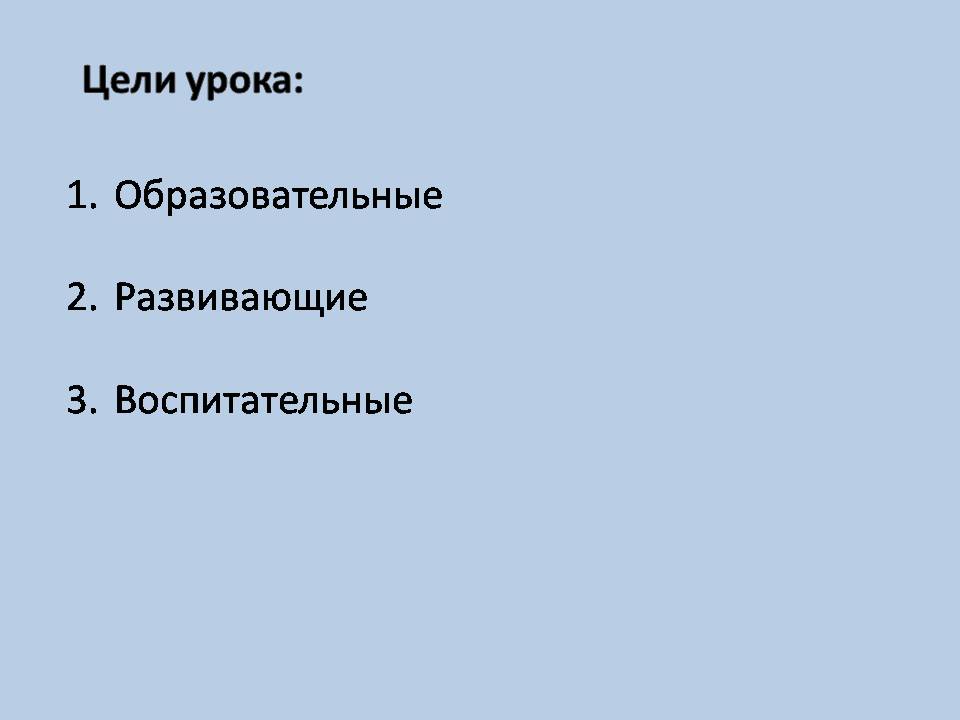
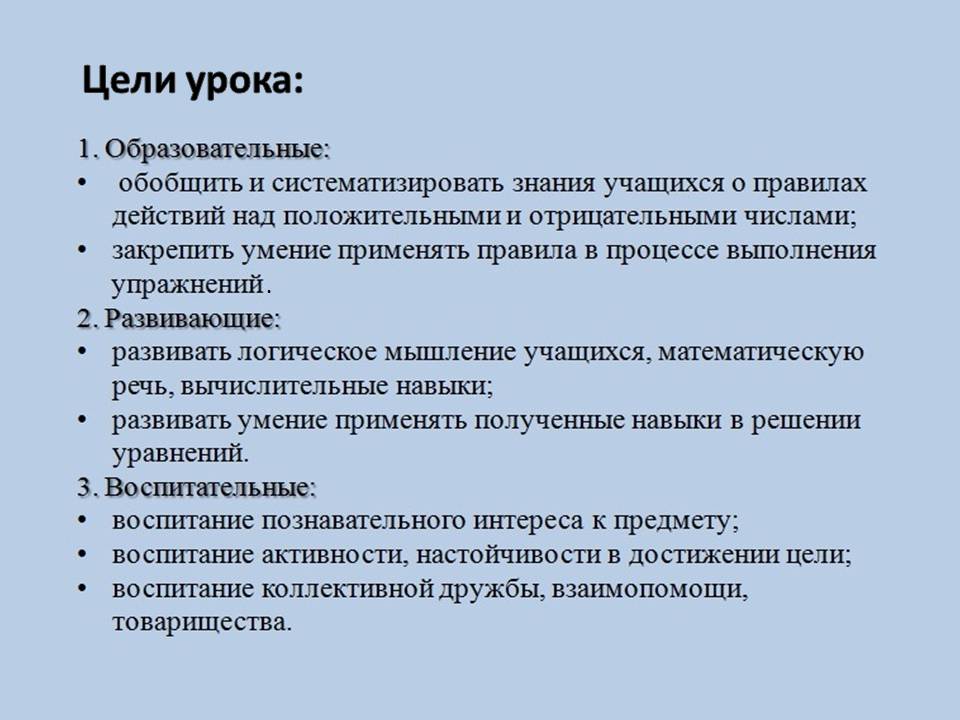
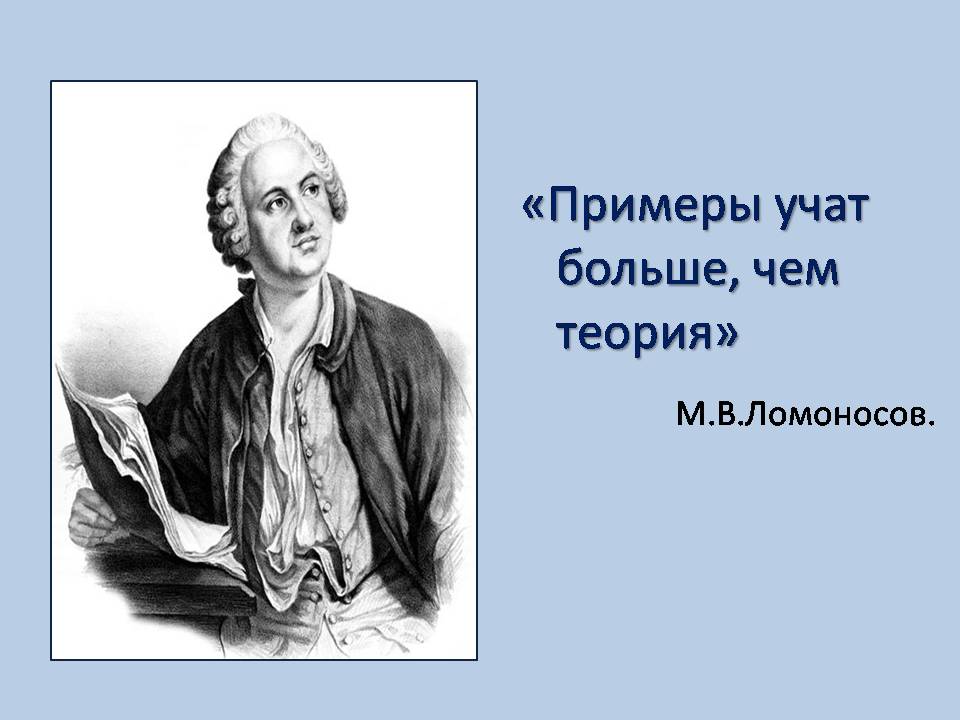
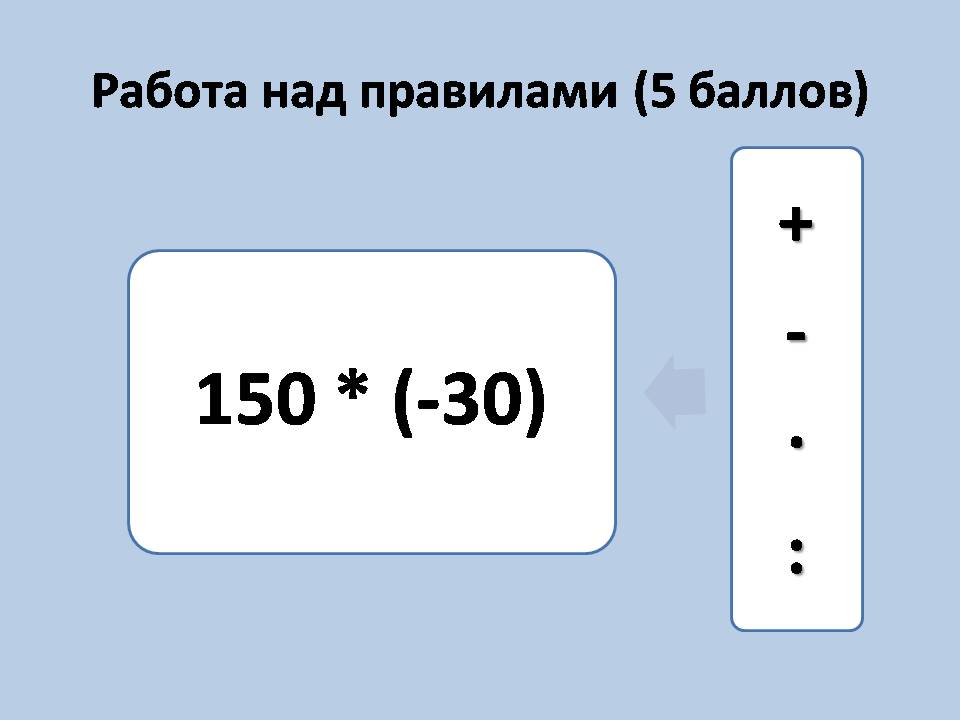
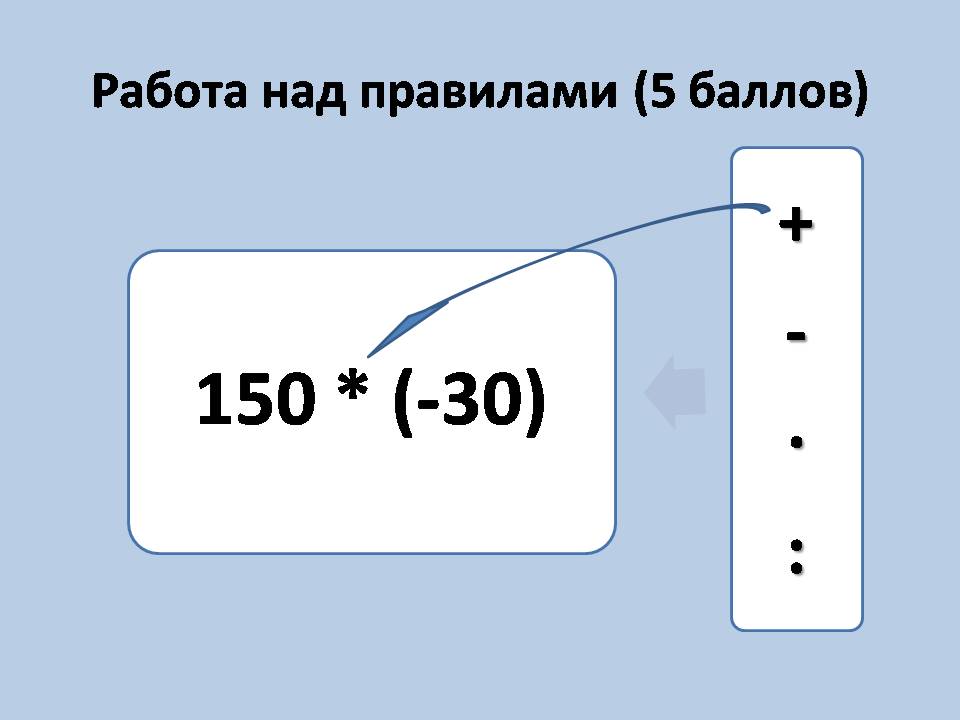
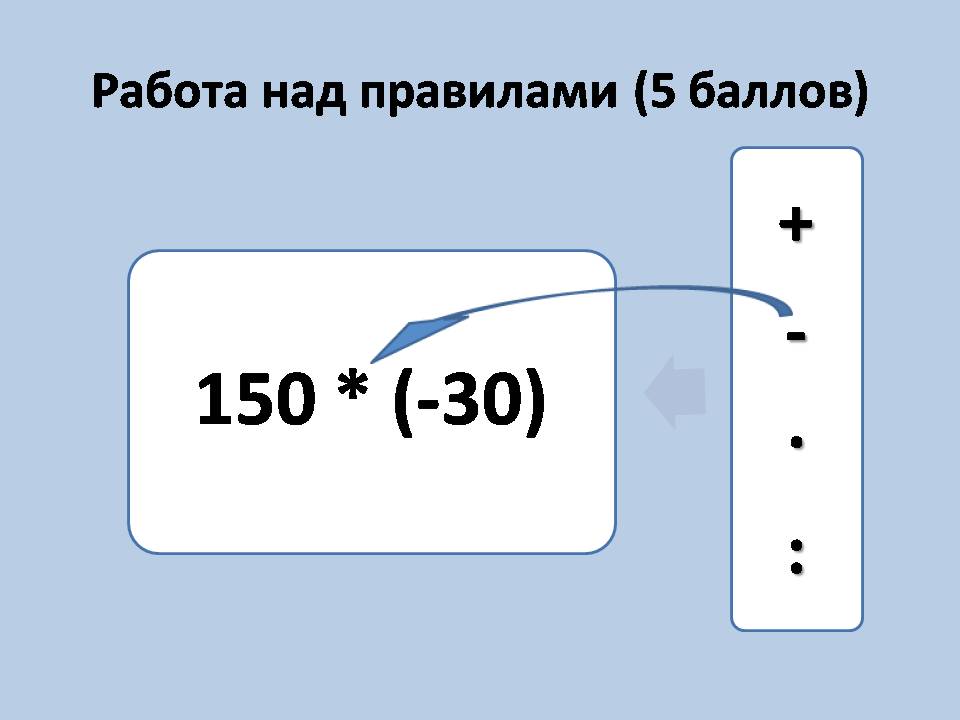
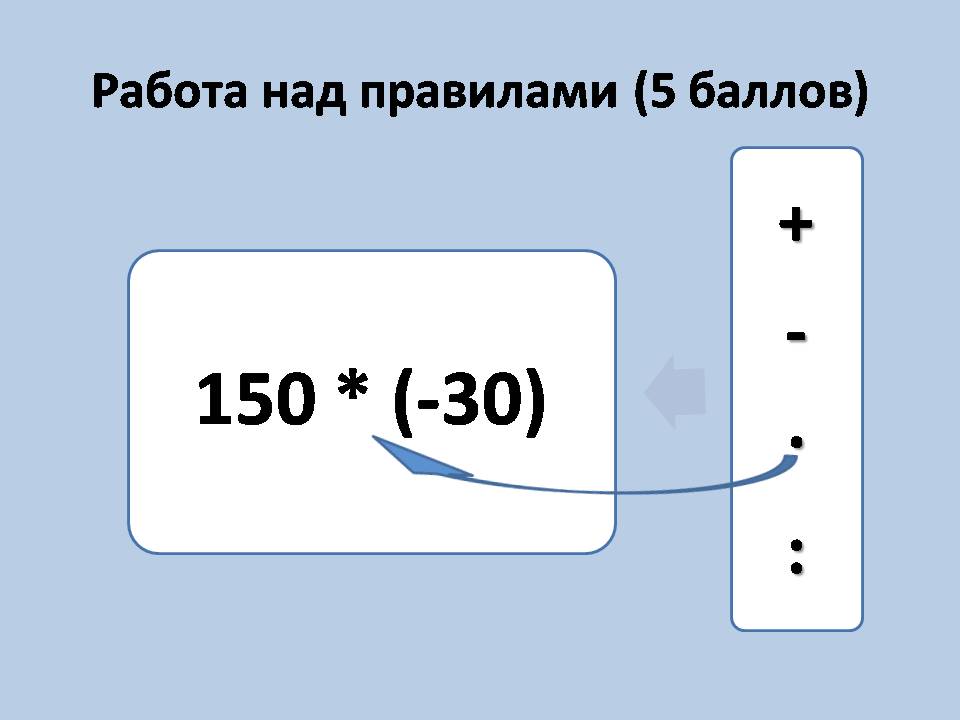
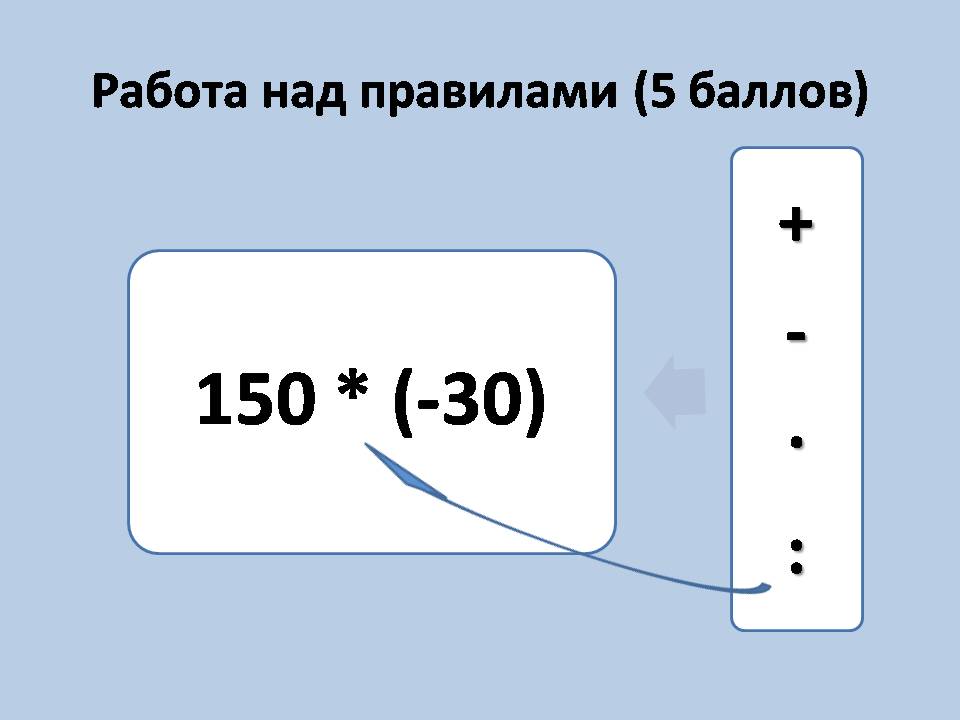



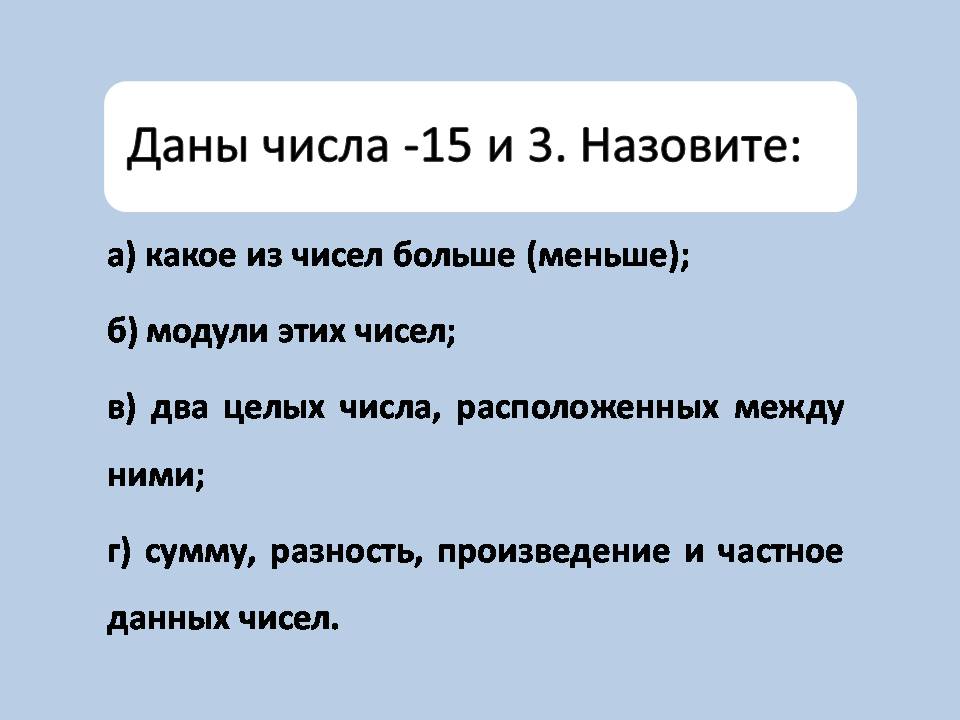
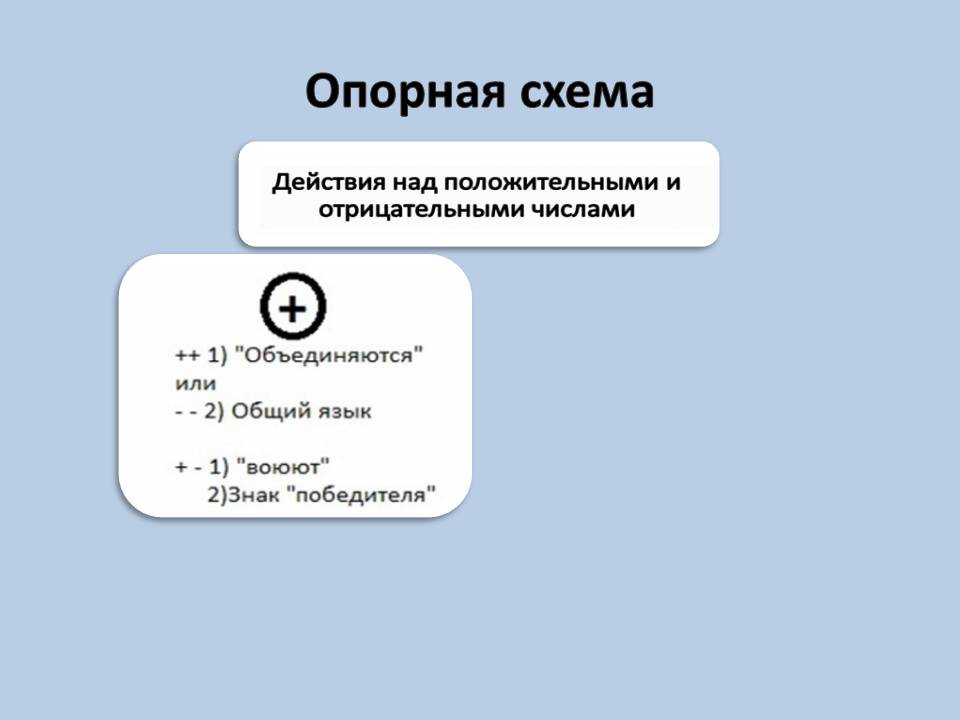
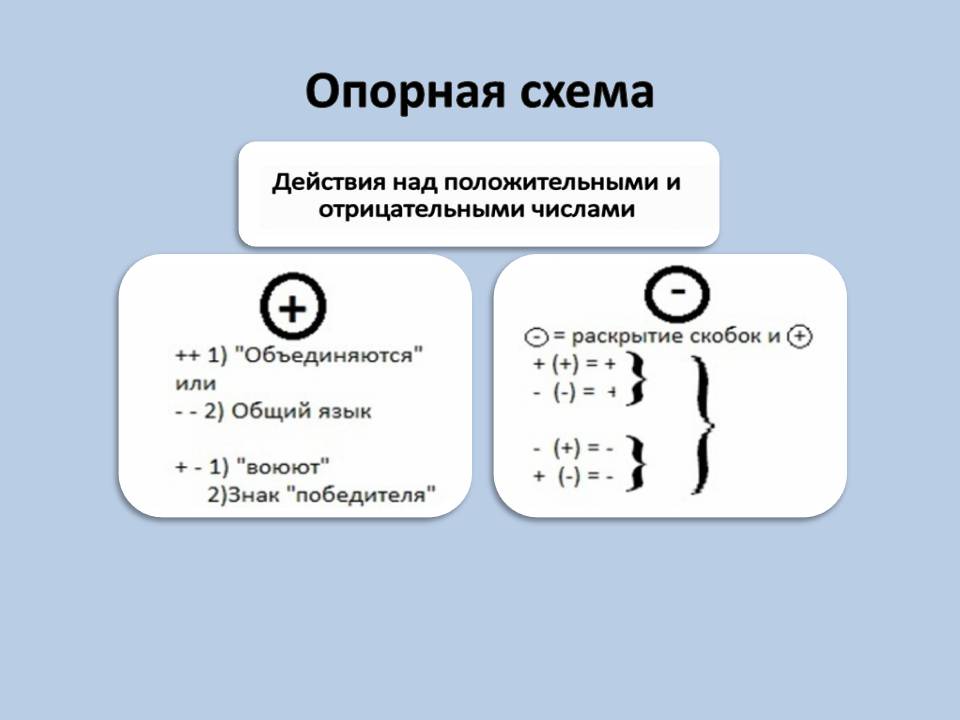
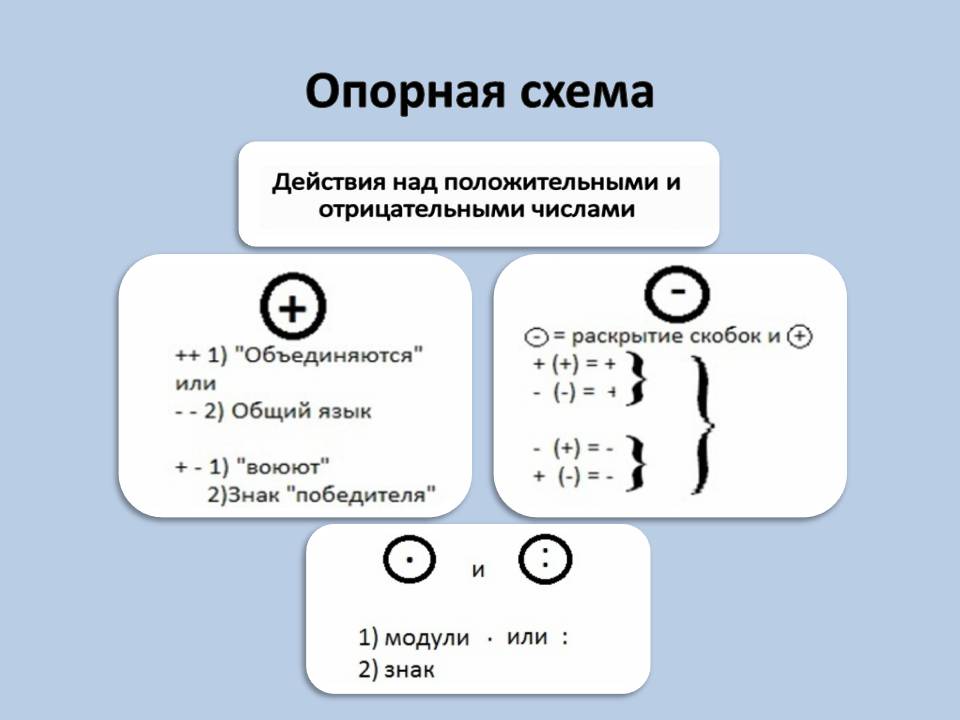
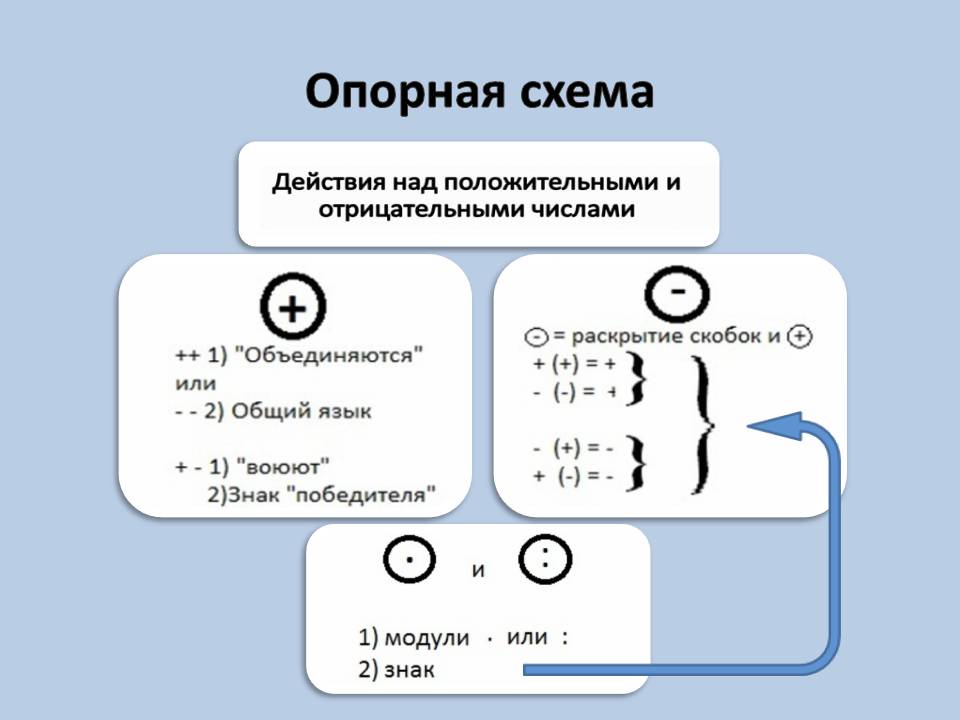
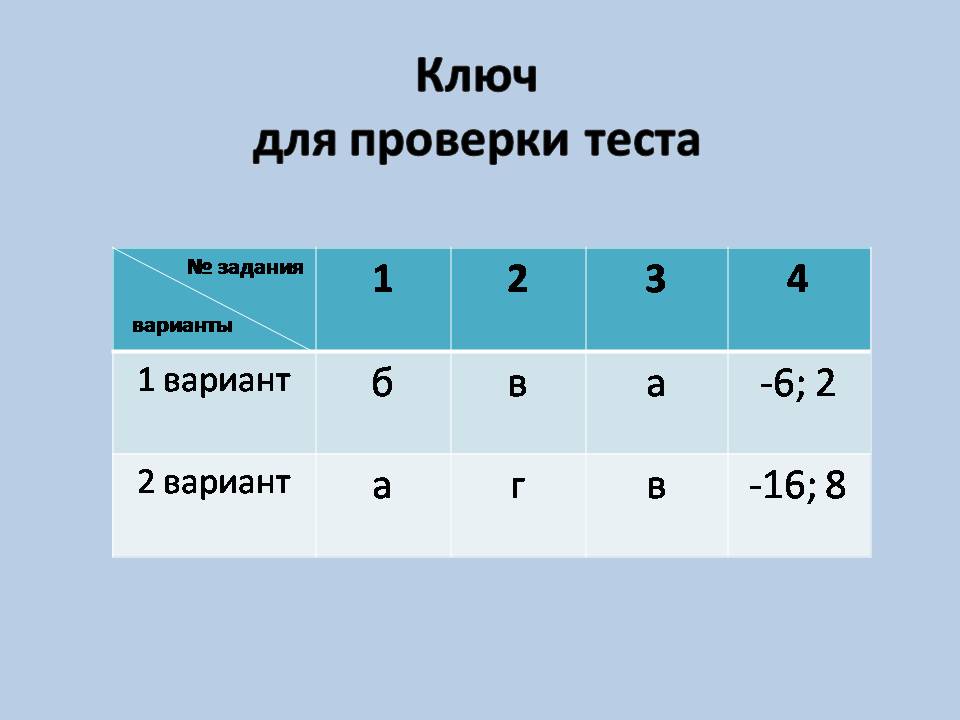
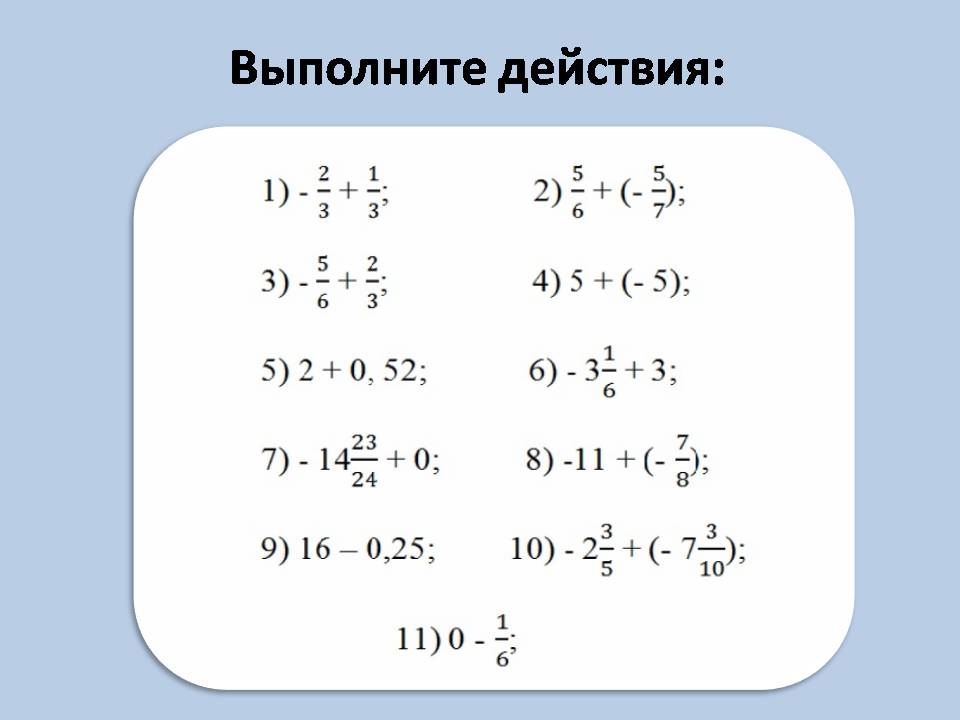
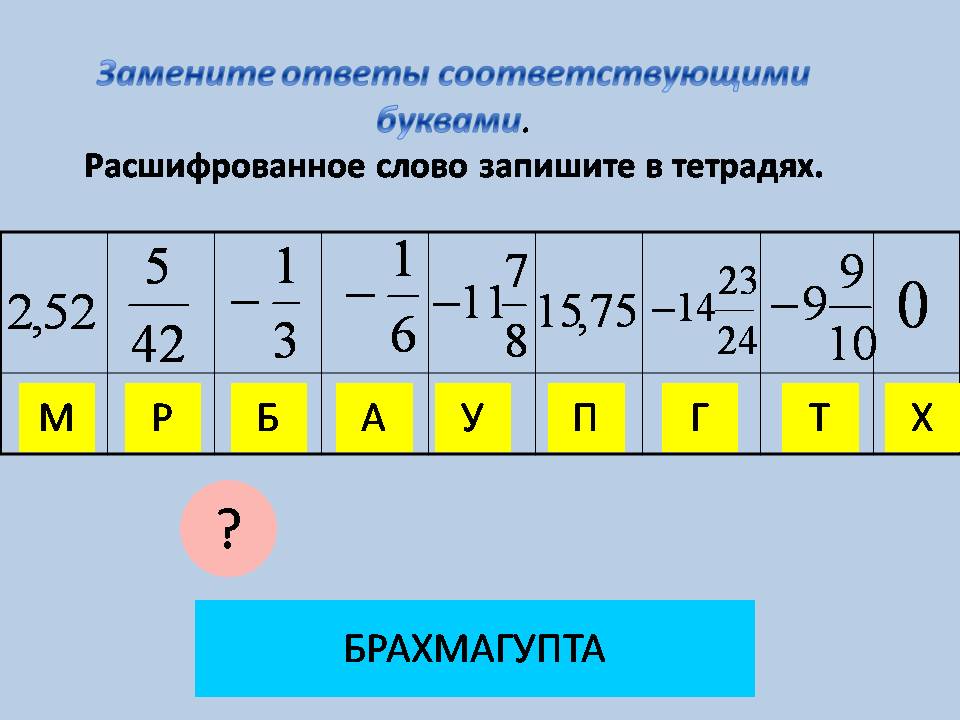
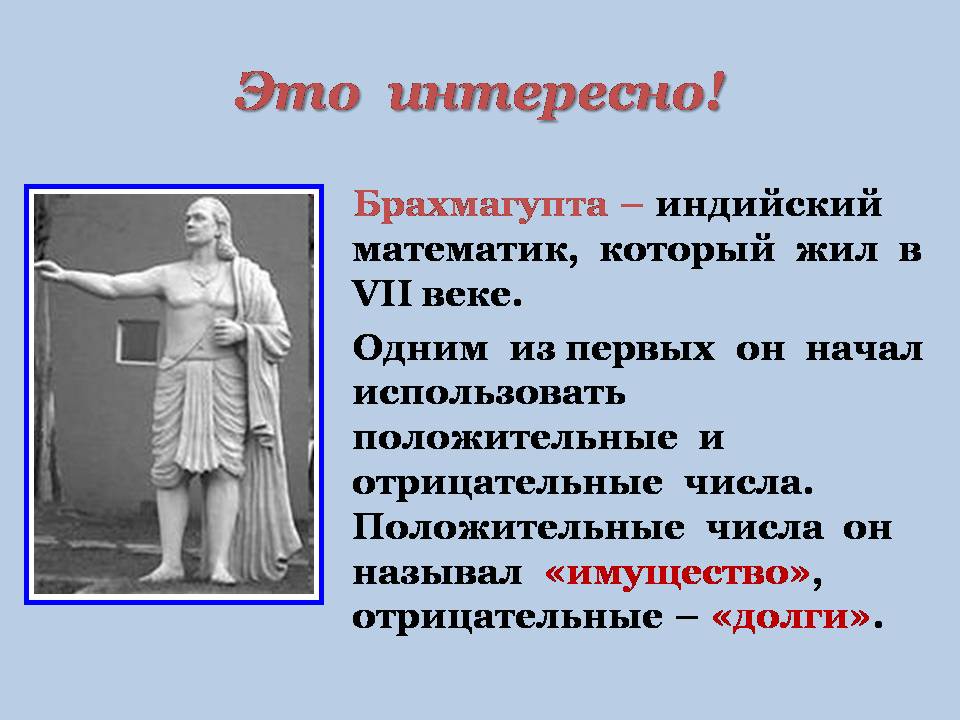
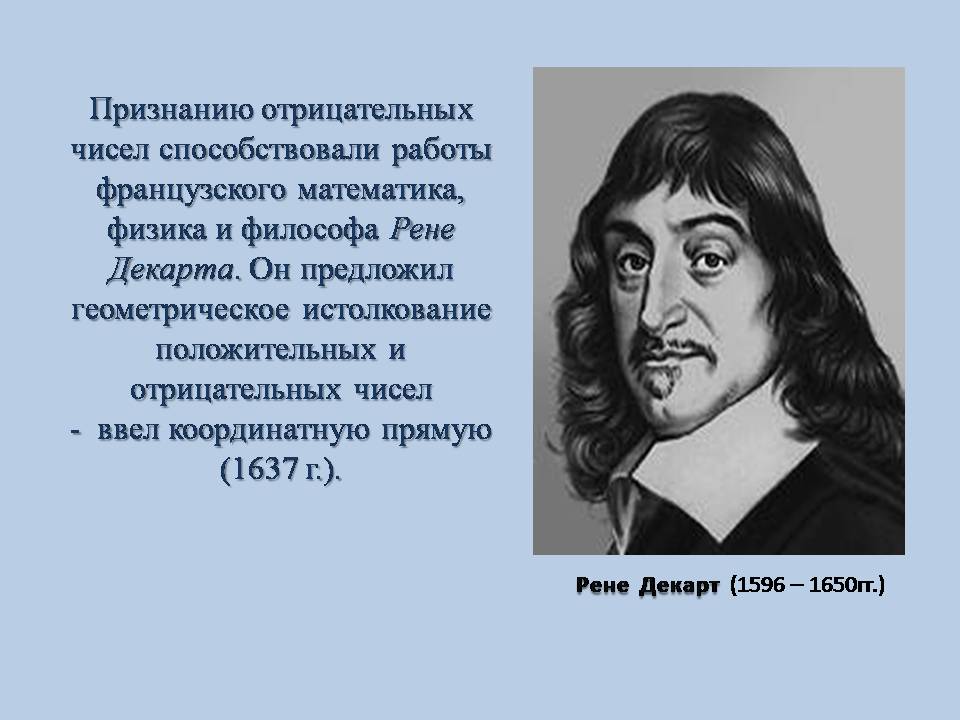
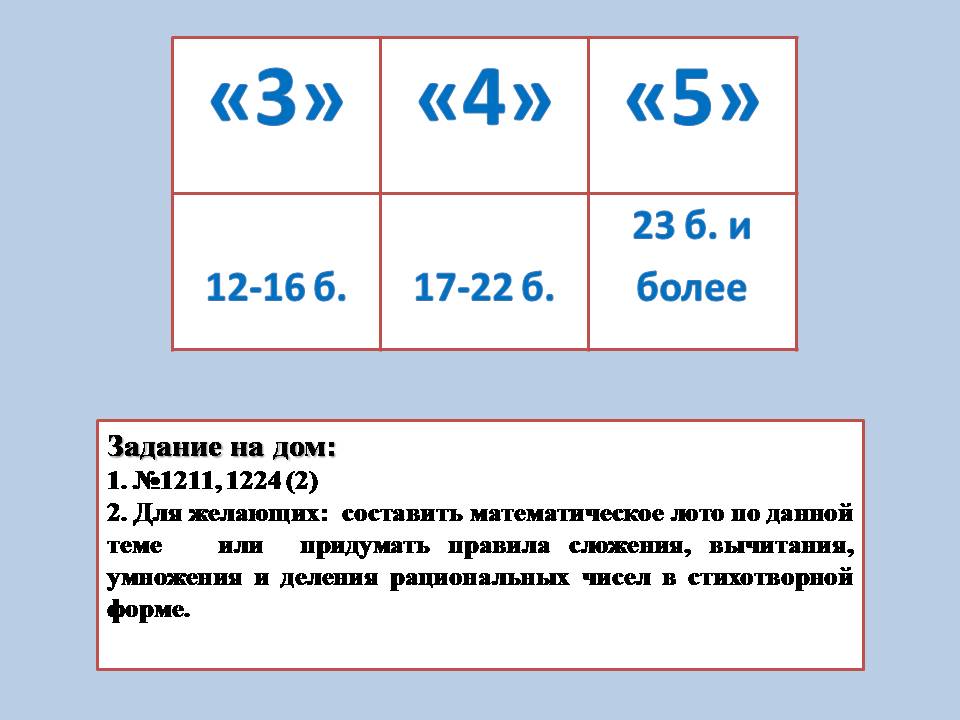
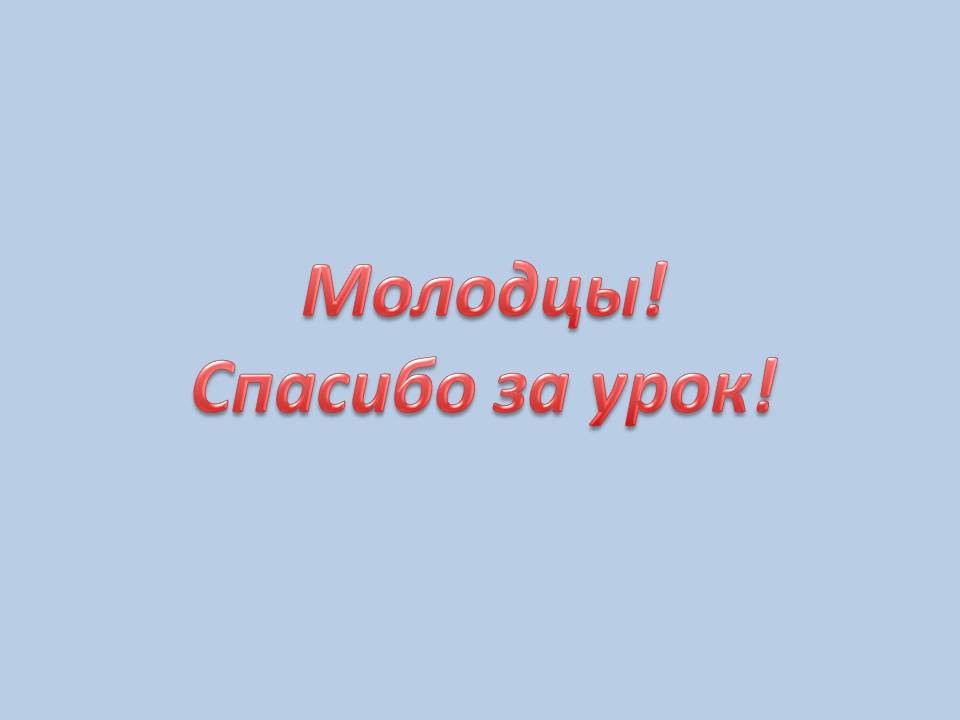 Back Forward
Back Forward
Attention! Slide previews are for informational purposes only and may not represent all the features of the presentation. If you are interested in this work, please download the full version.
Lesson objectives:
1. Educational:
- generalize and systematize students’ knowledge about the rules of operations with positive and negative numbers;
- consolidate the ability to apply rules during exercises;
- develop independent work skills.
2. Developmental:
- develop students’ logical thinking, mathematical speech, and computational skills;
- develop the ability to apply acquired skills in solving equations.
3. Educational:
- fostering cognitive interest in the subject;
- fostering activity and perseverance in achieving goals;
- fostering collective friendship, mutual assistance, and camaraderie.
Lesson type: repetition, systematization and generalization of what has been learned.
Forms of work in the lesson: individual, group, pair, collective; oral, written.
Equipment: visual material (presentation); multimedia projector, computer system; didactic handouts.
Lesson plan:
- Organizational moment.
- Setting goals and formulating the topic of the lesson.
- Updating students' knowledge.
- Consolidation of knowledge.
- Historical information.
- Summing up the lesson and homework assignment.
Lesson progress
I. Organizational moment.
- Good afternoon! Hello guys!
It's time for us to start our lesson.
It's time to calculate.
And to difficult questions
You can give an answer.
– And today there will be many difficult questions.
II. Setting goals and formulating the topic of the lesson.
( Slides 1 3
– Guys, during the last mathematics lessons, we learned to perform operations with positive and negative numbers. The purpose of today's lesson will be to consolidate knowledge related to performing operations on positive and negative numbers. So, let's formulate the topic of today's lesson together.
Students formulate a topic. Writing in notebooks.
– For the motto of our lesson, I would like to take the words of the brilliant Russian poet and scientist M.V. Lomonosov : “Examples teach more than theory.” And today you guys and I will try to confirm these words. (Slide 4)
For completing each task while working, you will give yourself a certain number of points in your notebooks.
III. Updating students' knowledge.
1) Working on the rules (5 points). (Slides 5-12)
- The teacher moves the pointer along the signs from top to bottom and says “Signs.” This means that the first student must represent, instead of *, the signs of actions in order of priority, and determine the signs of the numbers that will be obtained as a result of performing these actions. Then he moves the pointer from bottom to top, and the second student will name the signs of the numbers in reverse order.
- The teacher moves the pointer along the signs from top to bottom and says “Answers.” The third student should represent instead of * the signs of actions in order of priority, name the answers of the numbers that will be obtained as a result of performing these actions. Then he moves the pointer from bottom to top, and the fourth student will name the answers in reverse order.
- The teacher says, “Imagine that the number in first place is -150, not 150,” and asks them to complete a task orally similar to the previous one.
Check each example with a rule.
2) Given numbers -15 and 3. Name:
a) which number is greater (less);
b) modules of these numbers;
c) two integers located between them;
d) the sum, difference, product and quotient of given numbers (4 points). (Slide 13)
– So, you and I remembered the rules for dealing with positive and negative numbers.
IV. Consolidation of knowledge.
1) Basic diagram.(Slides 14-17)
– Now let’s repeat the basic rules for actions with negative and positive numbers and draw up a reference diagram.
The action of “subtraction” is replaced by immediately opening the parentheses and reducing to an algebraic sum, and the skill of calculating an algebraic sum is practiced.
2) Card-simulator. Work in groups (6 points).
- Guys, I’ll give you cards. Let us highlight four types of tasks, which are presented in the form of cards. For the convenience of the card, we will designate: “DPOC-1”, “DPOC-2”, “DPOC-3”, “DPOC-4”, where the letters indicate the topic, and the numbers indicate the serial number of the card. Each card contains 5 exercises with answers (Appendix 1).
All students receive one card and are seated in pairs. One of the students in the pair dictates the first exercise of his card to his partner, but does not read the answer. A partner performs the proposed exercise. The first student monitors the correct execution of the exercise by his partner. If the answer is correct, then he suggests doing the second exercise. If the answer is incorrect, then he gives his partner time to think and try again to answer the question. If a partner is at a loss or makes a mistake, the first student reports the correct answer, then moves on to the next question. After the first student dictates all the exercises from his card, and the second student completes them correctly, the partners change roles. Collaborative work is considered complete when all exercises are dictated and checked by each other. The couple separates and each student leaves with their own card. One of the students in the group coordinates the work.
3) Independent work(1-3 – 5 points; 4 – 3 points), ( appendix 2).
– Test yourself by completing test tasks on this topic.
1 option
What sign should be placed instead of * to obtain a true inequality? 10 + (-35) * -10.9
a) > b)<; в) =; г) нет такого знака
Follow these steps: (– 0.5* 6.8 + 1.2): (-2);
a) -2.3; b) -1.1; c) 1.1; d) 2.3
Solve the equation: -5 + x = 6.9
a) 11.9; b) -1.9; c) – 11.9; d) 1.9
For those interested. Solve the equation: |2 + x| = 4
Answers: 1. b; 2. in; 3. a; 4. – 6; 2.
Option 2
For those interested. Solve the equation: |4 + x| = 12
Answers: 1. a; 2. g; 3. in; 4. – 16; 8.Answer: Brahmagupta
Brahmagupta was an Indian mathematician who lived in the 7th century. He was one of the first to use positive and negative numbers. He called positive numbers “property” and negative numbers “debts”.
VI. Summing up the lesson.
(Slides 23-24)
- Guys, there are cards on your tables. Please fill it out! ( Appendix 4)
“3” – 12 -16b; “4” – 17 -22b; “5” – 23b or more.
Homework:
- №1211, 1224 (2)
- For those interested: create a mathematical lotto on this topic or come up with rules for adding, subtracting, multiplying and dividing rational numbers in poetic form.
Students hand over their notebooks and lesson summary cards for checking by the teacher.
- Well done! Thanks for the lesson!
Literary sources used in preparation for the lesson:
- Mathematics, 6th grade: textbook for educational institutions / N.Ya. Vilenkin, V.I. Zhokhov, A.S. Chesnokov, S.I. Shvartsburd. – M.: Mnemosyne, 2010.
- Mathematics at school, 1995, No. 2. Mutual training in mathematics lessons. Text by B.N. Bigeldinova.
- Mathematics at school, 1994, No. 6. Basic notes for grades 5-6. L.V. Voronin.
What sign should be placed instead of * to obtain a true inequality? 24 + (-30) * – 20.51
a) > b)<; в) =; г) нет такого знака
Follow these steps: (4.8* (– 0.5) – 2.1): 5;
a) – 0.18; b) 0.9; c) 0.18; d) – 0.9
Solve the equation: 7.2 – x = 8.7
a) 1, 5; b) 15, 9; c) – 1.5; d) – 15.9



